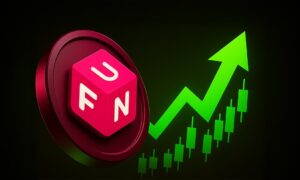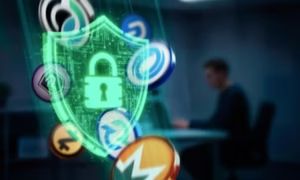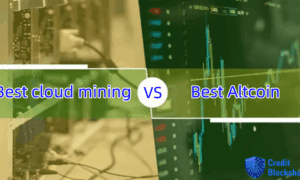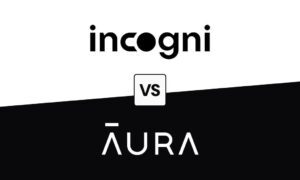Welcome to the world of BRC-20 tokens, where digital assets are revolutionizing the way we transact and interact within the blockchain ecosystem. Whether you’re a crypto enthusiast or just dipping your toes into this exciting realm, understanding the basics of BRC-20 tokens is crucial. In this blog post, we’ll unravel the mysteries behind these tokens, exploring their origins, functionalities, and how they have transformed the landscape of decentralized finance.
Introduction
BRC-20 tokens are a type of digital asset that is built on the blockchain network. These tokens are based on the Binance Smart Chain (BSC), which is a decentralized blockchain platform created by Binance, one of the largest cryptocurrency exchanges in the world.
The term “BRC” stands for “Binance Smart Chain”, while the number 20 refers to the token standard used for these assets. This standard was introduced by Binance with the aim of facilitating the creation and management of new tokens on its native blockchain.
Similar to other popular token standards such as ERC-20 (Ethereum) and BEP-2 (Binance Chain), BRC-20 tokens follow specific rules and protocols that enable them to function smoothly within their respective ecosystems. This consistency in design and functionality makes it easier for developers and users to interact with different types of tokens without having to learn new technicalities each time.
One of the main reasons behind the popularity of BRC-20 tokens is their compatibility with existing decentralized applications (DApps) on both the Ethereum and Binance Chain networks. This allows for seamless integration between different platforms, providing users with more options for accessing and using various services within the crypto space.
What are BRC-20 tokens?
BRC-20 tokens are a type of cryptocurrency token that operates on the blockchain network. They are based on the ERC-20 token standard and were specifically designed for use on the Binance Smart Chain (BSC) platform.
The acronym BRC stands for “Binance Smart Chain Request for Comment”, which is a nod to the fact that these tokens are created through a process of community involvement and feedback. The BRC-20 standard was introduced by Binance, one of the largest cryptocurrency exchanges in the world, as part of their efforts to make decentralized finance more accessible and user-friendly.
One of the key features of BRC-20 tokens is their compatibility with other ERC-20 tokens. This means that they can be traded on any exchange or platform that supports ERC-20 tokens, providing liquidity and ease of access for users. Additionally, because they are based on this well-established standard, developers can create new BRC-20 tokens with relative ease, further expanding the ecosystem.
History and Development
The history and development of BRC-Tokens is a story that begins with the rise of blockchain technology. Blockchain technology was first introduced in 2008 as a means to secure digital transactions without the need for a central authority. This breakthrough innovation quickly gained traction and sparked a wave of interest in creating decentralized systems.
In 2015, Ethereum was launched, enabling developers to build decentralized applications (DApps) on top of its network. This opened up endless possibilities for creating new types of digital assets, including tokens. Tokens are essentially digital representations of real-world assets or intangible items such as loyalty points, game items, or even ownership rights.
BRC-Tokens (Blockchain-Represented Commodities Tokens) emerged as a result of this technological advancement. The concept behind BRC-Tokens is simple: they are backed by real physical commodities such as gold, silver, oil, or even rare metals like platinum and palladium. These tokens leverage the power of blockchain to provide transparency and security in commodity trading.
The idea behind BRC-Tokens may seem relatively new; however, it has been around since 2017, when the founders of CoreLedger recognized the potential for combining traditional financial instruments with blockchain technology. They partnered with some major players in the commodities market to create BRC-Tokens backed by actual physical commodities.
Key Characteristics
1. Key Characteristics
BRC-tokens, also known as blockchain-based reward and loyalty tokens, are a type of digital currency that operates on a blockchain network. These tokens have gained significant popularity in recent years due to their ability to revolutionize the way businesses manage loyalty programs and rewards for their customers.
There are several key characteristics that make BRC-tokens unique and attractive to businesses and consumers alike. In this section, we will delve into these characteristics in detail to provide a better understanding of how BRC-tokens work.
1.1 – Decentralized Nature
One of the main features of BRC tokens is their decentralized nature. This means that they do not rely on any central authority or intermediary for validation or record-keeping. Instead, transactions involving BRC tokens are recorded on a secure blockchain network, which is accessible to all participants.
This decentralization eliminates the need for intermediaries such as banks or payment processors, resulting in faster and more cost-effective transactions for businesses and customers.
1.2: Immutable Ledger
Another defining characteristic of BRC tokens is their immutable ledger feature. Once a transaction is recorded on the blockchain network, it cannot be altered or deleted by anyone. This ensures complete transparency and security within the token’s ecosystem, making it nearly impossible for fraudulent activities to occur.
Moreover, this immutable ledger allows businesses and customers to track all transactions involving BRC tokens accurately, providing an added layer of trust between them.
1.3: Programmable and Customizable
BRC tokens are programmable, meaning they can be customized to suit the needs of a specific business or industry. Businesses can set rules and conditions for how their tokens can be earned, redeemed, or transferred, creating a unique and tailored loyalty program for their customers.
This characteristic allows for greater flexibility and creativity in developing loyalty programs that align with a business’s goals and values.
1.4: Interoperability
Interoperability refers to the ability of BRC tokens to be used across different platforms and businesses. This means that customers can earn BRC tokens from one business and use them at another, promoting cross-business collaboration and increasing customer engagement.
Furthermore, interoperability also allows for the integration of BRC tokens into existing loyalty programs, making it easier for businesses to transition to this new system.
1.5: Real-Time Transactions
Transactions involving BRC tokens occur in real-time, meaning there is no delay in processing or verifying transactions. This feature not only ensures faster transactions but also reduces the risk of fraud, as all transactions are recorded on the blockchain network instantly.
Real-time transactions also provide customers with immediate access to their rewards, enhancing their overall experience with the loyalty program.
How do BRC-20 tokens work?
BRC-20 tokens are a type of digital asset created on the blockchain network. They operate similar to other cryptocurrencies like Bitcoin or Ethereum, but with some unique features that set them apart. In this section, we will delve into how BRC-20 tokens work and their role in the world of decentralized finance.
1. Creation and Issuance
The first step in understanding how BRC-20 tokens work is knowing how they are created and issued. Unlike fiat currencies that are printed by central banks, BRC-20 tokens are generated through a process called tokenization. This involves converting real-world assets, such as stocks or commodities, into digital tokens that can be traded on the blockchain.
Tokenization not only provides investors with access to new types of assets but also makes it easier to trade these assets globally without traditional financial intermediaries like banks or brokers.
2. Smart Contracts
BRC-20 tokens operate on smart contracts, which are self-executing contracts with the terms of agreement between buyer and seller being directly written into lines of code. These smart contracts enable automatic execution of transactions once specific conditions are met, eliminating the need for intermediaries or third parties.
Smart contracts also allow for more complex functionalities, such as setting up rules for distributing dividends or creating time-bound lock-up periods for certain actions.
Understanding the Differences Between BRC-20 Tokens and Other Token Standards
BRC-20 tokens are a type of token standard on the blockchain that is based on the Ethereum network. They were created to address some of the limitations and issues present in other token standards, such as ERC-20. In order to truly understand BRC-20 tokens, it is important to have a clear understanding of the differences between them and other token standards.
1. Code Consistency: One major difference between BRC-20 tokens and other token standards is their code consistency. Unlike other standards that allow developers to customize their code, BRC-20 strictly follows a set of rules and guidelines for coding. This ensures uniformity across all BRC-20 tokens, making them easily compatible with each other.
2. Built-in Security Features: BRC-20 tokens come with built-in security features that provide an added layer of protection against potential hacks or vulnerabilities. These features include methods for handling transactions securely, preventing duplicate or invalid transactions, and avoiding loss or theft of funds.
3. Sophisticated Smart Contract Capabilities: The BRC-20 standard allows for more sophisticated smart contract capabilities compared to other token standards like ERC 223 or ERC 721. Smart contracts are self-executing computer programs that can automatically trigger actions when certain conditions are met, making them highly versatile for various use cases.
4. Better Token Management: Another key difference between BRC-20 tokens and others is in their token management capabilities. With BRC-20, users have greater control over their tokens, including the ability to freeze or unfreeze them and set limits on their transferability.
5. Interoperability: BRC-20 tokens are highly interoperable, meaning they can easily interact and exchange value with other tokens and smart contracts on the Ethereum network. This allows for seamless integration with decentralized applications (DApps) and other blockchain-based projects.
6. Token Standards Specific to Business Needs: Unlike other token standards, BRC-20 is designed specifically for business-related transactions. This includes features such as multi-signature support, customizable fees, and the ability to attach metadata to transactions.
Conclusion
Understanding the basics of BRC-20 tokens is crucial for anyone looking to enter the world of blockchain and cryptocurrency. By providing a deeper understanding of these tokens, we hope to have shed some light on the potential they hold for revolutionizing various industries and bringing about more secure and efficient transactions. As technology continues to advance, BRC-20 tokens are likely to play an increasingly significant role in shaping the future of finance and commerce.



































